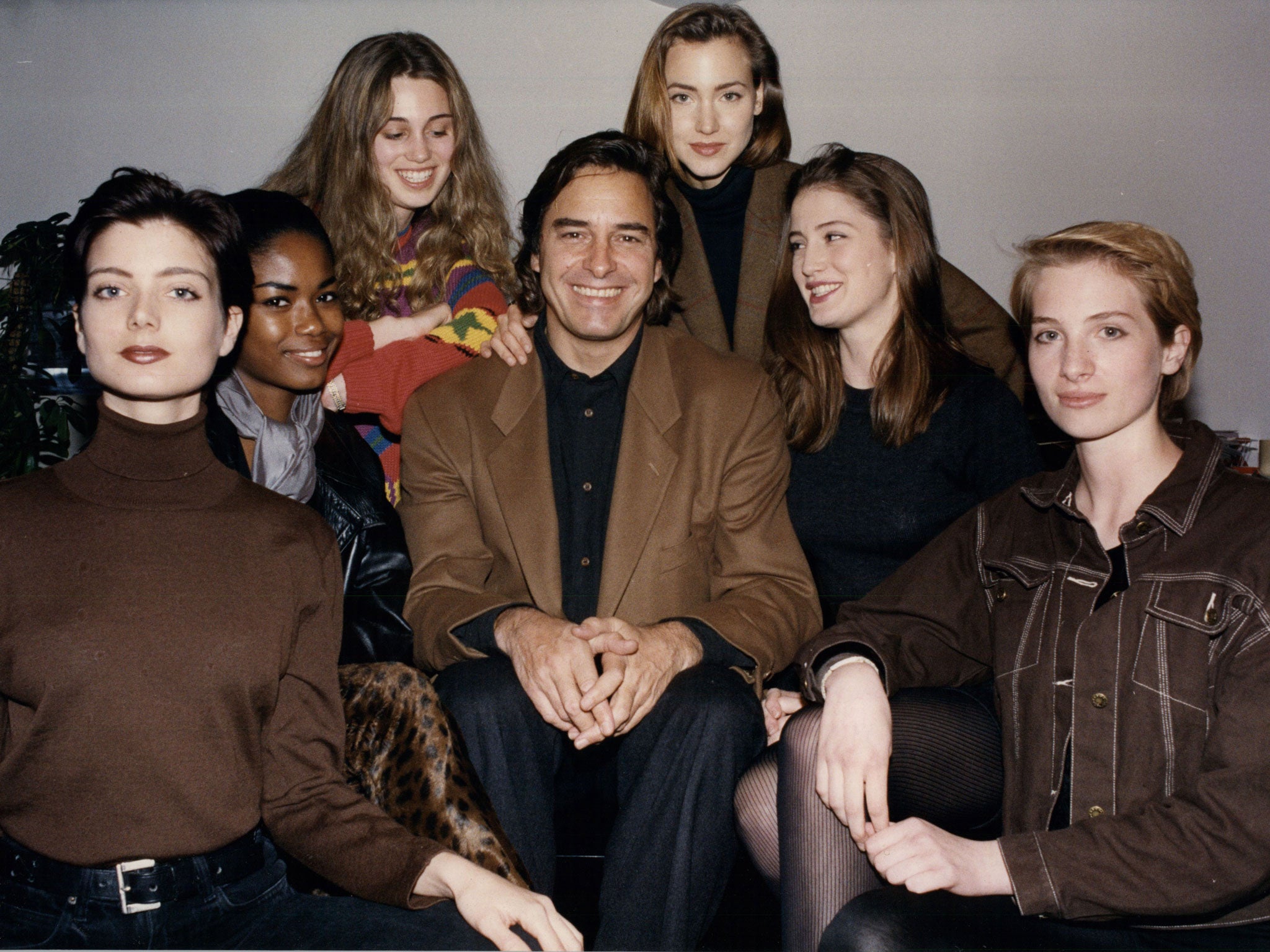John Casablancas obituary: Agent whose company, Elite, ushered in the era of the supermodel
He retired in 2000, saying, 'I'm leaving a business I detest' full of 'idiots and leeches'

John Casablancas was the founder of Elite Model Management, the international modelling agency that at its peak employed around 2,000 models via 35 offices worldwide.
He was the inventor of the supermodel, celebrities of the catwalk and magazine cover whose fame equalled the stars of pop music and Hollywood. Supermodels Casablancas discovered, or whose careers he boosted, included Gisele Bündchen, Naomi Campbell, Cindy Crawford, Heidi Klum – and Linda Evangelista, who once famously said, “We don’t wake up for less than $10,000 a day”.
Casablancas was born in Manhattan in 1942, the son of immigrants who had escaped the Spanish Civil War. He was educated in Switzerland and attended several European universities, without graduating, before working for Coca-Cola in Brazil. He moved to Paris in the late 1960s and met his second wife, Jeanette Christjansen, a model and former Miss Denmark. Inspired by her idea of creating a model agency, he founded Elite Model Management with his friend Alain Kittler.
Elite’s first major signing was Christie Brinkley, who had been spotted in Paris by the American photographer Errol Sawyer and introduced to Casablancas. “I was basically a surfer girl from California,” she said of that first meeting. “I never looked like a model”. Thirty years later, in February 2012, Brinkley was ranked third among the 20 richest models in the world.
The company opened a New York office in 1977, pitching itself directly against the local incumbent. Ford Models, which had been established in the city in 1946 by Eileen Ford, sought to see off the new kid on the block. Fierce competition ensued, with models switching back and forth between Elite and Ford, leading to what became known as the “Model Wars”. For the models the open conflict had its positive aspects, as one of their number, Beverly Johnson, noted. “Our rates have doubled and things couldn’t be better,” she said. “We used to undercut each other for plum assignments, but now the models are good friends. It’s the agencies that are at war.”
Casablancas observed candidly at the time, “Eileen Ford’s game is crystal-clear. She wants my skin. There’s so much ego and conniving in this business – anyone will do anything. But I am a warrior. I will fight. I will never sleep with both eyes closed as long as that woman is around.” Ford responded by filing a $10 million lawsuit, claiming that Elite was poaching their models.
Casablancas was proud of Elite’s success against the old guard: “It was a David-and-Goliath situation, and we came up winning. We did it by making the models celebrities. We gave them huge amounts of money, and we gave them names and personalities. We let them give interviews. Suddenly they became supermodels.”
By 1986, 15 years after its founding, Elite had 20 agencies across the world. But the rapid expansion was hitting the company financially. “We had a big head,” Casablancas’ business partner Kittler confessed. “We wanted to create agencies in Copenhagen, Brussels, London, Miami. And we lost a lot of money by going too fast.”
Casablancas loved this high-powered playboy world of money and beautiful women. As Michael Gross, author of Model: The Ugly Business of Beautiful Women, pointed out, “John ripped the hypocrisy off the modelling business. He said, ‘What we’re selling is sex, so let’s sell sex... It definitely stemmed from his personality, which was a man who loved women, lots of women.” Indeed, Casablancas spoke frankly about his preference for girls of just legal age – “child women”, as he referred to them.
The modelling world was continually overshadowed by allegations of a darker side. In 1999 an investigation by the BBC undercover reporter Donal MacIntyre into the business, including particularly Elite, sought to expose alleged drug-taking and sexual exploitation in the industry. However, by June 2001 the BBC was forced to back down in the face of a libel action from the company, and issued a jointly agreed statement conceding that “The BBC acknowledges that Elite, as an organisation, warns and seeks to protect its young teenage models, whether from sexual exploitation or other potential dangers to them (such as from illegal drugs), and that this was not reflected in the programme. In this respect, Elite was therefore unfairly portrayed.”
Casablancas sold his shares in Elite in 2000 and turned on the world which had made his fortune, saying, “I’m leaving a business I detest, I’m leaving stars who are unprepared for success and surrounded by idiots and leeches.”
A further legal case, brought by former sales director Victoria Gallegos, alleging that she had been forced to leave the company, won her $4.3 million. At the same time the supermodel was in decline, to be replaced in the public consciousness, and in the media, by an ever-growing band of “celebrity” faces. In 2004 Elite, in its then form, filed for bankruptcy protection.
Stefania Valenti, chief executive of Elite World, said in tribute: “Elite World and The Society Management are deeply saddened by Mr John Casablancas’ passing. As a man of extraordinary talent, Mr Casablancas was instrumental in formulating the global success of the Elite brand. His vision changed the model management concept, driving the careers of iconic top models.”
Casablancas died of cancer; his son Julian, from his marriage to Jeanette Christjansen, is the lead singer of the Strokes rock band.
John Casablancas, modelling agent: born Manhattan 12 December 1942; married firstly Marie Christine (marriage dissolved; one daughter), 1978 Jeanette Christjansen (marriage dissolved; one son), 1993 Aline Wermelinger (three children); died Rio de Janeiro 20 July 2013.
Subscribe to Independent Premium to bookmark this article
Want to bookmark your favourite articles and stories to read or reference later? Start your Independent Premium subscription today.

Join our commenting forum
Join thought-provoking conversations, follow other Independent readers and see their replies